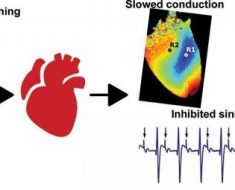There are many possible causes of penis lumps, most of which are harmless but some may have serious effects and require timely treatment. For this reason, it is essential to be able to distinguish between different causes of penis lumps, in order to decide upon the most suitable management plan.
Harmless Lumps
There are several types of penis lumps with various causes that are normal and do not usually require medical treatment. These types are outlined below.
Pearly penile papules are small lumps the usually appear on the head of the penis, which are completely normal and do not require any treatment. They do not result from sexually transmitted infections (STIs) or poor personal hygiene and may affect all men.
Fordyce spots are small spots that may appear on the head or shaft of the penis and are usually yellow-white in color. These arise from an obstruction in the sebaceous glands and are a normal occurrence that does not require medical treatment.
Lymphocele may occur when the lymph channels in the penis become blocked and the area becomes hard and swollen. The affected area on the shaft of the penis typically appears following sexual intercourse or masturbation. This usually resolves spontaneously given time and does not require treatment.
A crop of purple or red bumps in an itchy rash, known as lichen planus, can affect the penis, in addition to several other areas of the body. This is an autoimmune condition, caused by a reaction of the body’s native defense system.
Sexually Transmitted Infections (STIs)
Some types of lumps on the penis are caused by an infection that can be passed on from one person to another via sexual activities. These types are outlined in more detail below
Genital warts are small, flesh-coloured lumps that present on the shaft, head or under the foreskin of the penis. They are caused by the human papillomavirus and may require treatment to prevent spread onto other individuals.
Sores or ulcers on the penis may be caused by herpes or syphilis, both of which require treatment. Herpes usually leads to a painful blister or sore, whereas syphilis produces a sore or ulcer that is painless.
Peyronie’s Disease
This is a rare condition that causes a hard lump of plaque in the shaft of the penis, which can make the penis become curved when it is erect. The exact cause of Peyronie’s disease is not known, although there is a theory that it is due to abnormal wound healing.
Molluscum Contagiosum
In some cases, a virus may cause an infection in the genital region, leading to the formation of clusters of small raised spots. This may be contracted in a variety ways, including via sexual contact with another individual that is infected.
Malignancy
Penile cancer is a rare cause of lumps in the penis and requires treatment so should be detected as early as possible. Abnormal cell growth is responsible for the appearance of lumps, which are usually on the head or foreskin of the penis, but may appear in any area. A biopsy may be required to confirm that a suspicious lump of the penis is not caused by cancerous growth.
References
- https://www.andrologyaustralia.org/your-health/peyronies-disease/
- http://www.nhs.uk/chq/pages/879.aspx?categoryid=61&subcategoryid=616
- http://www.enkivillage.com/lump-under-skin-on-penile-shaft.html
- http://www.cancer.org/cancer/penilecancer/detailedguide/penile-cancer-signs-symptoms
- http://www.peyroniesassociation.org/what-is-peyronies/how-does-peyronies-occur/
Further Reading
- All Penis Content
- Penile Curvature – Peyronie’s Disease, Dupuytren’s Contracture
- Hypospadias outcomes
- Hypospadias
- Hypospadias Research
Last Updated: Jun 20, 2019

Written by
Yolanda Smith
Yolanda graduated with a Bachelor of Pharmacy at the University of South Australia and has experience working in both Australia and Italy. She is passionate about how medicine, diet and lifestyle affect our health and enjoys helping people understand this. In her spare time she loves to explore the world and learn about new cultures and languages.
Source: Read Full Article





